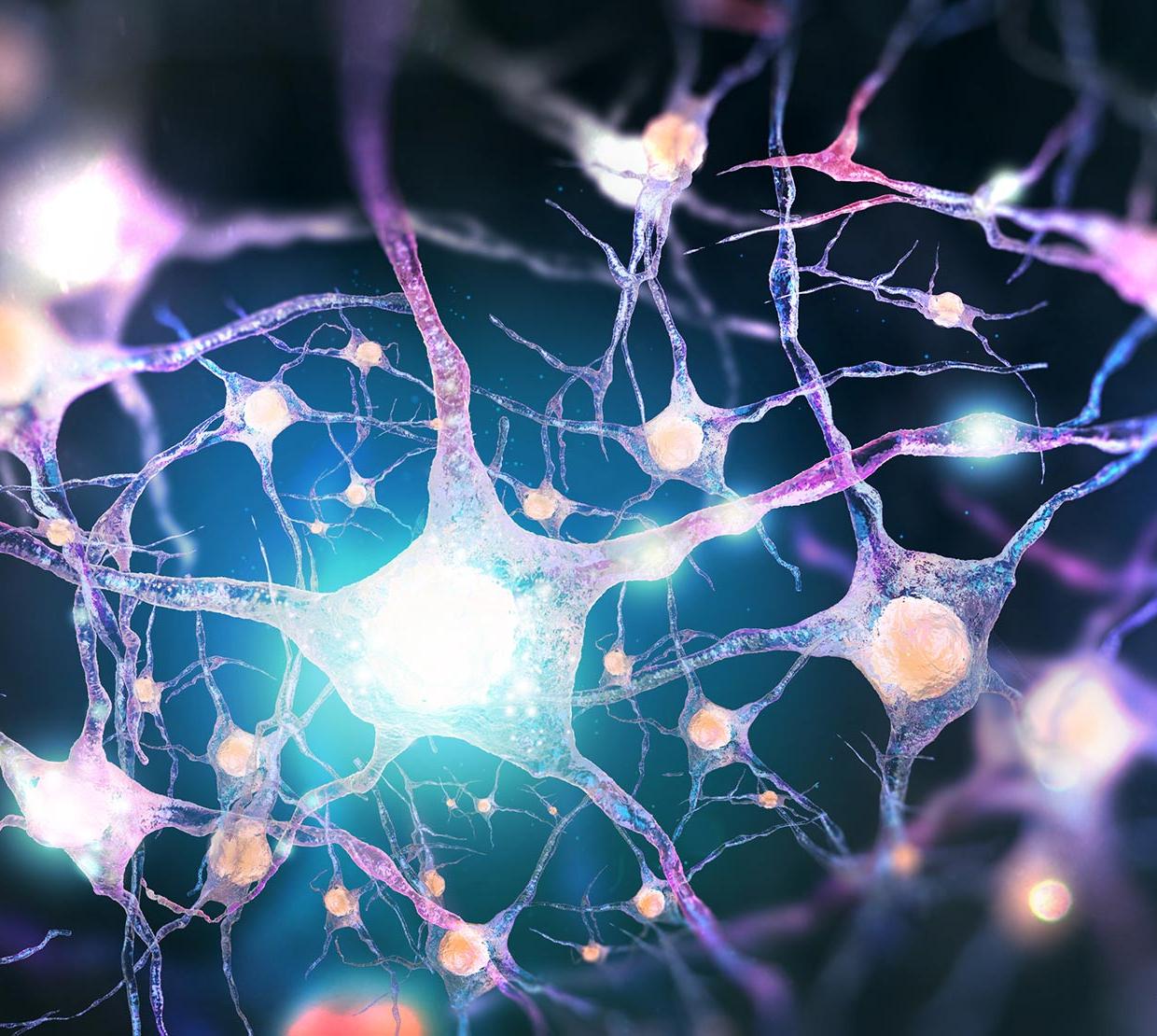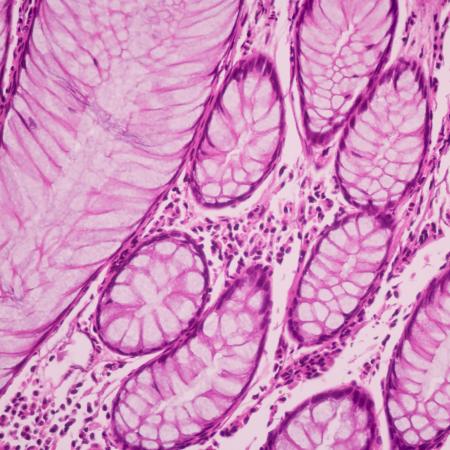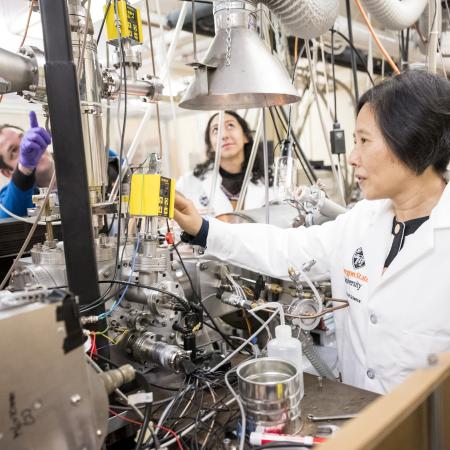Biohealth science is a new name for one of the oldest disciplines, which encompasses human biology, microbiology, biochemistry and molecular biology. But the field is evolving into one that permeates all science, including the more familiar biomedical science. From molecules and models to studies of human health, biohealth scientists accelerate discovery and advance understanding of human health.
For more than a century, the College of Science has been involved in fundamental and applied research and education in the biohealth sciences. Through our seven departments and many interdisciplinary centers and institutes, the College has deepened understanding and discovery through curiosity-driven research to address problems impacting human health while training the next generation of biohealth scientists.
Over the next century, our ability to address the fundamental questions of human health will depend on our ability to navigate health, energy, data, ecosystems and other areas to leverage the contributions of all scientists using a transdisciplinary approach.
The College has expanded its world-class leadership in fundamental, quantitative and translational research relevant to fighting disease and promoting health. Through biohealth science research and training, the College is advancing OSU’s goals of a healthy people, living on a healthy planet, in a healthy economy.
Biohealth science studies the mechanisms of disease, making it well suited for collaborative, interdisciplinary approaches to research. Faculty and students regularly work across fields from statistics, bioinformatics, physics, chemistry and mathematics to public health, pharmacy, biotechnology and engineering.
“So much basic research can feed into biohealth science and have a tremendous impact on human health,” explains P. Andrew Karplus, head of the Department of Biochemistry and Biophysics “And this can be true for any research in the College of Science.”
Mechanistic approach to disease
In January, Joseph Beckman, Distinguished Professor of Biochemistry and Biophysics, published a study revealing a new therapy involving a compound called copper-ATSM that essentially stops the progression of amyotrophic lateral sclerosis (ALS) for nearly two years in mice. Otherwise, the mice would die of ALS within five months.
Copper-ATSM is a known compound that delivers copper to specific cells with damaged mitochondria, and then travels to the spinal cord where it’s needed to treat ALS. The unusually low reduction potential of this compound prevents copper release in most tissues, but allows selective release of copper into cells with damaged mitochondria. The body quickly flushes any copper-ATSM it does not need.
The findings—some of the most compelling ever produced in the quest for a therapy to treat the debilitating and fatal disease ALS—was 20 years in the making. Beckman did not set out to find a treatment to the disease. He credits his success to his holistic mechanistic approach based on fundamental research.
This method is based on the premise that living organisms are complicated beings, composed of parts bearing no relation to each other. Yet how they function is influenced by the sum of the parts as a unique system. It is the organization, unity, and integration of the parts that produce one or more effects in the organism. With ALS, Beckman studied inflammation as a mechanism of the disease. Using this approach, he was able to find drug compounds that would likely not have found by screening random drug samples.
Using this approach, he was able to find drug compounds that would likely not have found by screening random drug samples.
Clarity in crystals
Cited as one of the best structural biologists in the world, Karplus approaches human health concerns through proteins.
“About 98% of all drugs target a protein, so if we are to advance human health initiatives, then we need to better understand protein structures.”
Given the importance of proteins, NIH established the Protein Structure Initiative in 2000, which is an ongoing effort to accelerate discovery in structural genomics and to enhance our understanding of biological functions. Initially, the program sought to make it possible for a detailed three-dimensional structure of any protein to be generated easily based on their corresponding DNA sequences.
Once documented, these structural descriptions would help researchers learn about the functions of proteins and design experiments to solve biomedical problems, help them identify promising new structure-based medicines faster and develop better treatment of genetic and infectious diseases. The process of solving many protein structures would also help develop improved technologies and methodologies for protein production and to determine and predict structures.
This is where Karplus’ work fits in. With the support of two National Institutes of Health (NIH) grants, he has the monumental task of examining all protein structures ever deciphered and identifying the principles that govern their structure. Karplus' work can inform the work of other scientists. They can apply these principles in order to more accurately model protein structure and then better understand and manipulate the roles they play in human health and disease.
“One way to explain what the new principles we learn can do is, ‘they help make fuzzy pictures of proteins sharper’,” said Karplus.
Oxidative stress
Biochemist Tory Hagen and his team broke new ground in understanding why older adults are increasingly at risk for age-related diseases, including cancer, neurodegenerative disorders and environmental insults. They discovered that a key transcription factor governing more than 200 antioxidant and stress-resistance genes becomes impaired with age, limiting normal cellular response and increasing susceptibility to disease.
The researchers also found that the loss of this transcription factor stems from a cadre of microRNA’s that arise with age and limit synthesis of the protein. This discovery provides a novel target which can improve resiliency to a host of stresses and may improve healthspan.
Biochemist Elisar Barbar’s team explores the elucidation of molecular structure/assembly and the regulation of protein interaction networks associated with Huntington’s disease (mental retardation) and systems with important biomedical implications.
Cutting across disciplines
Microbiologist Bruce Geller studies pathogenic antibiotic-resistant bacterial infections. His team created antisense antibiotics that bind to and silence the gene responsible for a severe form of antibiotic resistance that makes some bacteria resistant to nearly all antibiotics.
Zoology professor Jaga Giebultowicz studies body clocks, circadian rhythms and circadian clocks that regulate molecular and physiological rhythms.
Jim Strother’s team examines how physiology, biomechanics, and neurobiology shape the interaction of animals with their environment. Their current research is focused on understanding respiratory exchange using zebrafish as a model system.




